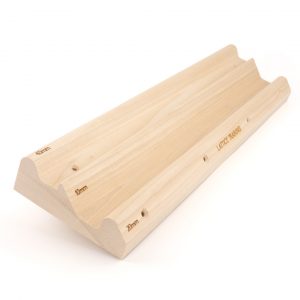What is RPE? How do I know my ‘Rating of Perceived Effort’?
Rating of Perceived Effort (RPE) is a common term in training. But what is it?
RPE is measurement of the conscious sensation of how hard, heavy or strenuous a physical task is.
Basically, how much effort you put into an exercise or an attempt.
RPE is subjective
Unlike weight or duration, which are objective measures, RPE is a subjective measurement. You evaluate your own experience.
Performing a 7 second max hang with a 10kg load may score a 1/10 RPE for one person, but a 9/10 for someone else. It’s personal and subjective.
Why do we use Rating of Perceived Effort?
Why would we choose to use RPE to determine the intensity of an exercise and not an objective measure like duration or weight?
When we start a training phase, we test ourselves to determine our abilities. As we train, our abilities improve and exercises become easier.
An example…
Max hanging at bodyweight might be a 10/10 RPE at Week 1, but by Week 5, it may be a 8/10. Ideally, we want the RPE to stay the same throughout the training phase so we continue to see improvements at a fairly consistent rate.
However, when you’re writing your plan, how do you predict what weight to add by Week 5?
At Week 5, we could re-test ourselves and use that to determine the load. But what about next week? Do we re-test ourselves again?
Maybe we can extrapolate our progress to predict what load to use next week… but improvement isn’t linear…
Overloading can cause injury and we may not be able to adapt positively. If the load is too little, we won’t see as much improvement.
RPE is a way for determining the intensity (load, duration, volume, etc.) of an exercise without the need for testing or re-testing. It isn’t always 100% accurate as it is a subjective measurement, but it’s helpful for guiding the intensity of sessions as you and your training progress.
RPE also considers how we’re feeling session-to-session; if we feel run down one day but high energy the next, RPE allows for those fluctuations in our energy levels.
How do I determine my RPE?
The following points should be considered when determining your rating of perceived effort:
1. Effort differs from other exercise-related sensations.
For example, pain and fatigue. This means that when you rate your RPE, other sensations should not be considered in this rating (e.g. how fatigued your finger flexors are, or how uncomfortable the pump is).
2. Rate RPE during exercise.
As RPE is related to the feeling experienced during exercise, perception of effort should be rated during the exercise.
3. Use descriptors to help assess the difficulty of an exercise:
| 1 | Resting |
| 2 | Very easy |
| 3 | Easy |
| 4 | Moderate |
| 5 | Challenging |
| 6 | Hard |
| 7 | Really Hard |
| 8 | Very Hard |
| 9 | Extremely Hard |
| 10 | Maximal |
4. Effort is experienced differently during whole-body exercises and isolated exercises.
Therefore, exercise-specific descriptions to rate RPE can be considered. For example…
“How hard is it for you to maintain your grip position?” could be used for fingerboard exercises.
“How hard is it for you to drive your legs and arms? How heavy is your breathing?” could be used for whole-body wall-based exercise.
5. RPE is rated in comparison to past experiences.
You can use memory-anchoring to calculate RPE – comparing your current effort to your memory of the most effort you’ve ever made. This is subjective; think of the time that felt like the most effort you’ve ever put in. How does this current effort compare?
You can also use exercise-anchoring to calculate RPE – comparing your current effort to the effort required for the hardest exercise you’ve ever performed. This is objective; for example, recall the effort required for your 1 rep max pull-up, or 7 second max hang. How does the current effort compare?






